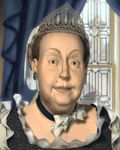The Russians |
|||||||||||||||||||||||
| Profile | |||||||||||||||||||||||
|
|||||||||||||||||||||||
|
Russian Cities
Great Leaders
|
Background
Indo-European, Ural-Altaic, and other races have occupied what is now the territory of Russia since 2000 BC, but little is known about their institutions and activities. Modern Russia dates from about 770, when Viking explorers began an intensive penetration of the Volga region. From bases in estuaries along the eastern Baltic, Scandinavian bands, probably in search of new trade routes to the east, began to penetrate territory populated by Finnish and Slavic tribes, where they found unlimited natural resources. Within a few decades the Rus, as the Viking settlers were known, together with other Scandinavians operating farther west, extended their raiding activities down the main river routes toward Baghdad and Constantinople, reaching the Black Sea in 860. In the period from 930 to 1000, the region came under complete control by the Rus from their capital at Novgorod. The lifeblood of this sprawling Kievan empire was the commerce organized by these Viking princes. Novgorod’s burghers even forged an accommodation with the invading Mongols during the 13th century, but its absorption by the growing Slavic principality of Muscovy in 1478 ended its political independence. Ivan III (1462-1505) consolidated the gains his father, Vasily II, had won in the saddle. This “gathering of the Russian lands” became a conscious and irresistible five-century drive by Moscow to annex all Slavic lands, both the Russian territories and the Belorussian and Ukrainian regions. The accession of Peter I (the Great; 1694-1725) ushered in and established the social, political and intellectual trends that were to dominate Russia for the next two centuries. The location of his capital, St. Petersburg, on the shores of the Gulf of Finland symbolized this shift toward a European involvement. Catherine the Great (1762-1796) would prove to be Peter’s true intellectual and political heir. Catherine’s reign was notable for imperial expansion. Most important were the securing of the northern shore of the Black Sea, the annexation of the Crimea, and the expansion into the steppes beyond the Urals. This permitted the protection of Russian agricultural settlements in the south and the establishment of trade routes through the Black Sea. In the process, the military democracies of the Cossack hosts along the Dnieper, Don and Volga rivers lost their autonomy and special privileges; the wealthier officers became Russian nobles, receiving the right to own and settle serfs on their own lands, while the fierce horsemen sank to the level of peasants with special military obligations. Despite the heritage of Peter and Catherine, by the time of Nicholas II (1894-1917) Russia was in disarray, fighting an onerous war and plagued by internal misery and oppression. The Kerensky provisional government, a moderate attempt to resolve the problems, collapsed in the face of the Bolshevik revolution. Given the Bolshevik desire to dominate the whole of Russia and the rest of the former tsarist empire, civil war was inevitable. Stalin would complete the consolidation of Communist power begun by Lenin. And he would lead Soviet Russia through the greatest threat to its existence, and help it emerge as one of the world’s superpowers following the Second World War. But in the ensuing Cold War, Russia’s economy tottered towards collapse. The people turned to Boris Yeltsin, a liberal Party functionary. Elections to the Congress of People’s Deputies in March 1989 saw him score a stunning victory. He used his newfound legitimacy to promote Russian sovereignty, to advocate and adopt radical economic reform, to demand Gorbachev’s resignation, and to negotiate treaties with the Baltic republics, in which he acknowledged their right to secede from the union. An ill-conceived, ill-planned, and poorly executed coup attempt to unseat Yeltsin occurred August 1991, bringing an end to the Communist Party and accelerating the movement to disband the Soviet Union. Yeltsin dissolved the Union of Soviet Socialist Republics in December 1991, banned the Communist Party in Russia and seized all of its property. Unique Unit: the Cossack The Cossack is an upgraded version of the cavalry. Like cavalry, it requires both horses and saltpeter to build, but it also adds an additional point of defense to an already formidable set of combat statistics. With their high movement rates, deadly offensive capability, and solid defensive rating, the Cossack is a unit you don’t want to tangle with.
|
||||||||||||||||||||||

 The Russians are scientific and expansionist. They start the game with Bronze Working and Pottery and build cossacks instead of normal cavalry.
The Russians are scientific and expansionist. They start the game with Bronze Working and Pottery and build cossacks instead of normal cavalry.  Skilled horsemen dwelling in the northern steppes of the Black and Caspian Sea regions, the Cossack hosts had a tradition of fierce independence and, after decades of conflict, finally received privileges from the Russian government in return for military services. Under the Russian umbrella, the Cossacks expanded eastward from their settlements in the Don and were early colonizers of Siberia. From the 18th through the 20th centuries, the Czars used Cossacks extensively to suppress revolutionary activities and conduct foreign wars. During the Russian Civil War (1918-20), the Cossacks in southern Russia formed the core of the White armies there and suffered extensively. Under Soviet rule, the Cossack communities ceased to function as distinctive entities.
Skilled horsemen dwelling in the northern steppes of the Black and Caspian Sea regions, the Cossack hosts had a tradition of fierce independence and, after decades of conflict, finally received privileges from the Russian government in return for military services. Under the Russian umbrella, the Cossacks expanded eastward from their settlements in the Don and were early colonizers of Siberia. From the 18th through the 20th centuries, the Czars used Cossacks extensively to suppress revolutionary activities and conduct foreign wars. During the Russian Civil War (1918-20), the Cossacks in southern Russia formed the core of the White armies there and suffered extensively. Under Soviet rule, the Cossack communities ceased to function as distinctive entities.